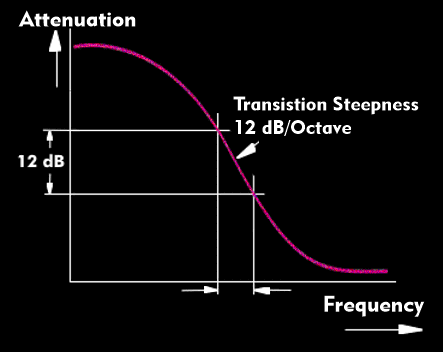transition steepness
In analog filters, the slope is a measure of frequency selection, of filtering out adjacent frequencies. It is the passband curve of the filter and the filter characteristic below or above the filter frequency.
The slope depends on the quality factor and describes the drop of the signal level in decibels per octave below or above the roll-off. Since the sound is significantly influenced by the slope, filters with defined slopes are used in audio technology.
Simple analog filters, so-called 1-pole filters or 1st order filters, have a slope of 6 dB/octave, corresponding to 20 dB/ decade. This means that a 1st order low-pass filter with a roll-off of 250 Hz has a level reduction of 6 dB at 500 Hz, i.e. after one octave, and one of 20 dB at 2.5 kHz. When several filters are cascaded, the slope increases. For 2nd order filters this is 12 dB/octave, for 3rd order filters 18 dB/octave and for 4-pole filters 24 dB/octave or 80 dB/decade. These slopes are used in audio technology, for example.
Analog filters with high slopes cause phase and delay shifts that can be eliminated by using digital filters.

